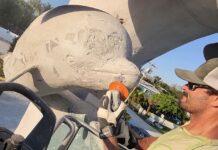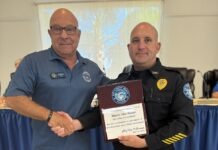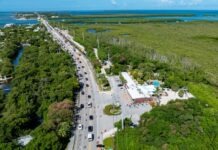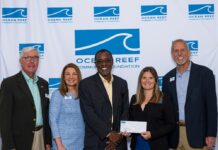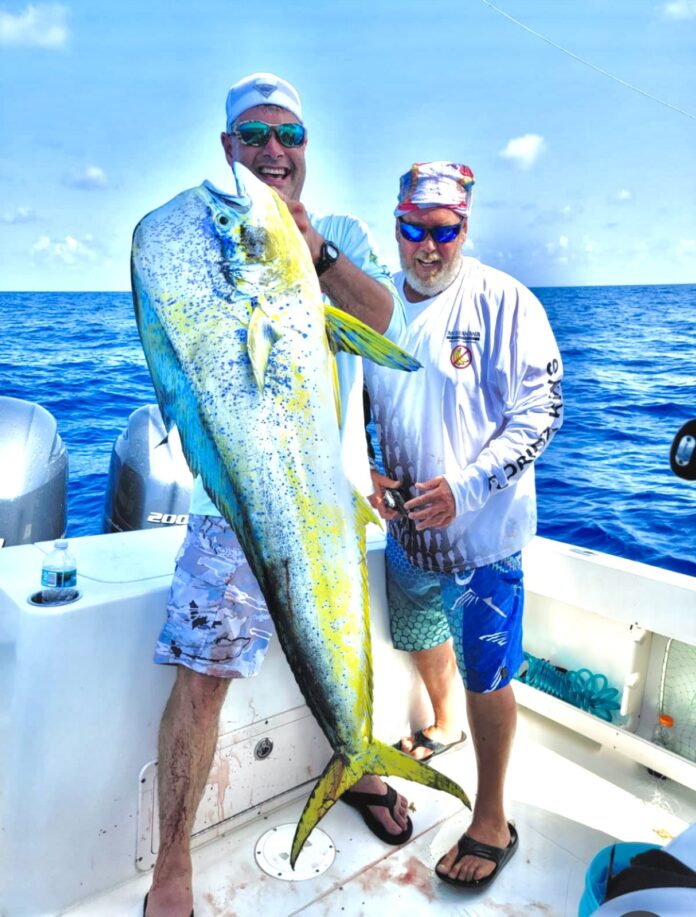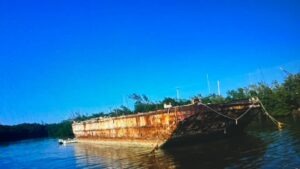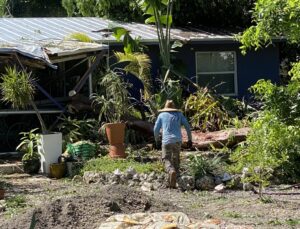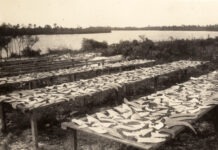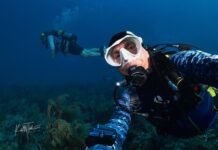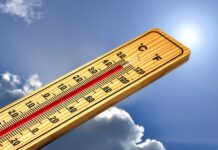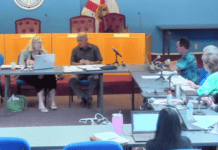There are several ways to target trophy bull dolphin. During this time of year, there are several mahi tournaments going on around the Florida Keys. In some, like the Habitat for Humanity’s Mother’s Day tournament in Marathon in the middle of May, the winning dolphin was just over 20 pounds. In the Tom Thumb Bull and Cow tournament, the winning bull dolphin was 35 pounds.
Gray’s Taxidermy claims the average bull dolphin mounted is between 50 and 60 inches long. The world record bull dolphin is 87 pounds, caught in 1976 in Costa Rica. The Florida record is 81 pounds, caught in 2007 in Lantana. My personal best bull mahi is around 50 pounds, and the biggest bull dolphin caught by anybody I personally know was one caught by Doug Dittmer a few years ago off the coast of Daytona that weighed in at 72.6 pounds.
My definition of a trophy bull dolphin is any bull over 30 pounds. I feel a bull over that weight is about one in a thousand.
The last nine out of 10 trophy bull mahi caught on the Ana Banana boats were caught under diving frigate birds. If you’re offshore fishing and you happen to find a diving frigate bird, it is mandatory to troll under or cast to that bird. Frigate birds can’t land in the water like pelicans, seagulls, ospreys and other sea birds of prey, and they have been known to stay in the air for 100 to 200 days in a row.
Mother Nature equipped frigates with a hooked beak and a serrated bill so they can swoop down without hitting the water and snatch their favorite food from the air, which is a flying fish. Because frigates have a ravenous diet for flying fish, they wake up each morning searching for the biggest pair of dolphin they can find – yes, pair, because once a bull and cow dolphin exceed 30 inches, they are believed to feed and breed together for life. A big bull and cow hunting in pairs are the most likely to push up and spook the most flying fish to the surface, and the frigates instinctively know that.
We also target big bull dolphin by finding floaters. Anything bigger than a Styrofoam cup is considered a floater offshore – pallets, logs, buckets, migrant rafts. Some avid offshore dolphin anglers swear by using teasers, some swear by planers and downriggers, and some swear by having multiple baits out at the same time while trolling. Some say they catch more bulls with a kite. My favorite bait for trolling is a naked double-hooked ballyhoo on 50-pound 6-foot monofilament fluorocarbon.
Some avid mahi anglers swear by lures; many say color matters, many say reflective mylar in your color pattern matters. My favorite colors while trolling for mahi with artificial baits are pink and root beer.
I’ve found if you hook a big bull, be ready for the large cow partner to hit your bait quickly, and many times you’ll be doubled up. However, if the large cow hits first, it may take a while for the bull to hit afterward – the bull seems to be upset that she ate a bait before him. Bull are angry creatures; a big bull will eat after the cow, but he’s an emotional creature and it takes time for him to get his head right enough to eat.
Dolphin are the fastest-growing fish in the ocean and they reproduce more times than most other ocean fish. They are seasonal here in the Florida Keys; the best time of the year is May to September. That doesn’t mean you won’t catch dolphin between October and April. It just means that the best migration for dolphin is between May and September.
There’s been a lot of talk about this big weed blob heading toward Florida. Some people think the more weeds, the more mahi; others think the more weeds, the less mahi, because it’ll be harder to target them when finding a weed line as it would just be another brick in the wall. Some people even claim that there’ll be so many weeds, we won’t even be able to drive boats offshore or out of our canals. My personal thoughts on “the blob” are that it will affect the west coast a lot more than the east coast, and I feel the Florida Keys will be spared because of our strong Gulf Stream.
The dolphin bite is already picking up with good quality, and we look forward to taking you out dolphin fishing.
To book a charter with Ana Banana, call or text Capt. Joel at 813-267-4401 or Capt. Jojo at 305-879-0564, or visit anabananafishing.com.




